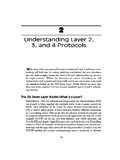Transcription of Chap-2 (8th Nov.) - NCERT
1 20 MATHEMATICSFile Name : C:\Computer Station\Class - X (Maths)/Final/ Chap-2 /Chap 2(8th Nov). IntroductionIn Class IX, you have studied polynomials in one variable and their degrees. Recallthat if p(x) is a polynomial in x, the highest power of x in p(x) is called the degree ofthe polynomial p(x). For example, 4x + 2 is a polynomial in the variable x ofdegree 1, 2y2 3y + 4 is a polynomial in the variable y of degree 2, 5x3 4x2 + x 2is a polynomial in the variable x of degree 3 and 7u6 423482uuu++ is a polynomialin the variable u of degree 6. Expressions like 11x , 2x+, 2123xx++ etc., arenot polynomial of degree 1 is called a linear polynomial. For example, 2x 3,35,x+ 2y+, 211x , 3z + 4, 213u+, etc., are all linear polynomials. Polynomialssuch as 2x + 5 x2, x3 + 1, etc., are not linear polynomial of degree 2 is called a quadratic polynomial.
2 The name quadratic has been derived from the word quadrate , which means square . 22,235xx+ y2 2, 223,xx + 22 22125,5,4337uuvvz + + are some examples ofquadratic polynomials (whose coefficients are real numbers). More generally, anyquadratic polynomial in x is of the form ax2 + bx + c, where a, b, c are real numbersand a 0. A polynomial of degree 3 is called a cubic polynomial. Some examples ofPOLYNOMIALS NCERTnot to be republishedPOLYNOMIALS21 File Name : C:\Computer Station\Class - X (Maths)/Final/ Chap-2 /Chap 2(8th Nov).pmda cubic polynomial are 2 x3, x3, 32,x 3 x2 + x3, 3x3 2x2 + x 1. In fact, the mostgeneral form of a cubic polynomial isax3 + bx2 + cx + d,where, a, b, c, d are real numbers and a consider the polynomial p(x) = x2 3x 4. Then, putting x = 2 in thepolynomial, we get p(2) = 22 3 2 4 = 6.
3 The value 6 , obtained by replacingx by 2 in x2 3x 4, is the value of x2 3x 4 at x = 2. Similarly, p(0) is the value ofp(x) at x = 0, which is p(x) is a polynomial in x, and if k is any real number, then the value obtained byreplacing x by k in p(x), is called the value of p(x) at x = k, and is denoted by p(k).What is the value of p(x) = x2 3x 4 at x = 1? We have :p( 1) = ( 1)2 {3 ( 1)} 4 = 0 Also, note thatp(4) = 42 (3 4) 4 = p( 1) = 0 and p(4) = 0, 1 and 4 are called the zeroes of the quadraticpolynomial x2 3x 4. More generally, a real number k is said to be a zero of apolynomial p(x), if p(k) = have already studied in Class IX, how to find the zeroes of a linearpolynomial. For example, if k is a zero of p(x) = 2x + 3, then p(k) = 0 gives us2k + 3 = 0, , k = 32 In general, if k is a zero of p(x) = ax + b, then p(k) = ak + b = 0, , bka = So, the zero of the linear polynomial ax + b is (Constant term)Coefficient ofbax =.
4 Thus, the zero of a linear polynomial is related to its coefficients. Does thishappen in the case of other polynomials too? For example, are the zeroes of a quadraticpolynomial also related to its coefficients?In this chapter, we will try to answer these questions. We will also study thedivision algorithm for Geometrical Meaning of the Zeroes of a PolynomialYou know that a real number k is a zero of the polynomial p(x) if p(k) = 0. But whyare the zeroes of a polynomial so important? To answer this, first we will see thegeometrical representations of linear and quadratic polynomials and the geometricalmeaning of their zeroes. NCERTnot to be republished22 MATHEMATICSFile Name : C:\Computer Station\Class - X (Maths)/Final/ Chap-2 /Chap 2(8th Nov).pmdConsider first a linear polynomial ax + b, a 0.
5 You have studied in Class IX that thegraph of y = ax + b is a straight line. For example, the graph of y = 2x + 3 is a straightline passing through the points ( 2, 1) and (2, 7).x 22y = 2x + 3 17 From Fig. , you can seethat the graph of y = 2x + 3intersects the x-axis mid-waybetween x = 1 and x = 2,that is, at the point 3,02 .You also know that the zero of2x + 3 is 32 . Thus, the zero ofthe polynomial 2x + 3 is thex-coordinate of the point where thegraph of y = 2x + 3 intersects general, for a linear polynomial ax + b, a 0, the graph of y = ax + b is astraight line which intersects the x-axis at exactly one point, namely, ,0ba .Therefore, the linear polynomial ax + b, a 0, has exactly one zero, namely, thex-coordinate of the point where the graph of y = ax + b intersects the , let us look for the geometrical meaning of a zero of a quadratic the quadratic polynomial x2 3x 4.
6 Let us see what the graph* ofy = x2 3x 4 looks like. Let us list a few values of y = x2 3x 4 corresponding toa few values for x as given in Table *Plotting of graphs of quadratic or cubic polynomials is not meant to be done by the students,nor is to be NCERTnot to be republishedPOLYNOMIALS23 File Name : C:\Computer Station\Class - X (Maths)/Final/ Chap-2 /Chap 2(8th Nov).pmdTable 2 1012345y = x2 3x 46 0 4 6 6 4 06If we locate the points listedabove on a graph paper and drawthe graph, it will actually look likethe one given in Fig. fact, for any quadraticpolynomial ax2 + bx + c, a 0, thegraph of the correspondingequation y = ax2 + bx + c has oneof the two shapes either openupwards like or opendownwards like depending onwhether a > 0 or a < 0. (Thesecurves are called parabolas.)
7 You can see from Table 1 and 4 are zeroes of thequadratic polynomial. Alsonote from Fig. that 1 and 4are the x- coordinates of the pointswhere the graph of y = x2 3x 4intersects the x- axis. Thus, thezeroes of the quadratic polynomialx2 3x 4 are x- coordinates ofthe points where the graph ofy = x2 3x 4 intersects fact is true for any quadratic polynomial, , the zeroes of a quadraticpolynomial ax2 + bx + c, a 0, are precisely the x- coordinates of the points where theparabola representing y = ax2 + bx + c intersects the our observation earlier about the shape of the graph of y = ax2 + bx + c, thefollowing three cases can happen:Fig. NCERTnot to be republished24 MATHEMATICSFile Name : C:\Computer Station\Class - X (Maths)/Final/ Chap-2 /Chap 2(8th Nov).
8 PmdCase (i) : Here, the graph cuts x-axis at two distinct points A and A .The x- coordinates of A and A are the two zeroes of the quadratic polynomialax2 + bx + c in this case (see Fig. ).Fig. (ii) : Here, the graph cuts the x-axis at exactly one point, , at two coincidentpoints. So, the two points A and A of Case (i) coincide here to become one point A(see Fig. ).Fig. x-coordinate of A is the only zero for the quadratic polynomial ax2 + bx + cin this case. NCERTnot to be republishedPOLYNOMIALS25 File Name : C:\Computer Station\Class - X (Maths)/Final/ Chap-2 /Chap 2(8th Nov).pmdCase (iii) : Here, the graph is either completely above the x-axis or completely belowthe x-axis. So, it does not cut the x- axis at any point (see Fig. ).Fig. , the quadratic polynomial ax2 + bx + c has no zero in this , you can see geometrically that a quadratic polynomial can have either twodistinct zeroes or two equal zeroes ( , one zero), or no zero.
9 This also means that apolynomial of degree 2 has atmost two , what do you expect the geometrical meaning of the zeroes of a cubicpolynomial to be? Let us find out. Consider the cubic polynomial x3 4x. To see whatthe graph of y = x3 4x looks like, let us list a few values of y corresponding to a fewvalues for x as shown in Table 2 1012y = x3 4x030 3 0 Locating the points of the table on a graph paper and drawing the graph, we seethat the graph of y = x3 4x actually looks like the one given in Fig. NCERTnot to be republished26 MATHEMATICSFile Name : C:\Computer Station\Class - X (Maths)/Final/ Chap-2 /Chap 2(8th Nov).pmdWe see from the table abovethat 2, 0 and 2 are zeroes of thecubic polynomial x3 4x. Observethat 2, 0 and 2 are, in fact, thex- coordinates of the only pointswhere the graph of y = x3 4xintersects the x-axis.
10 Since the curvemeets the x- axis in only these 3points, their x- coordinates are theonly zeroes of the us take a few moreexamples. Consider the cubicpolynomials x3 and x3 x2. We drawthe graphs of y = x3 and y = x3 x2in Fig. and Fig. NCERTnot to be republishedPOLYNOMIALS27 File Name : C:\Computer Station\Class - X (Maths)/Final/ Chap-2 /Chap 2(8th Nov).pmdNote that 0 is the only zero of the polynomial x3. Also, from Fig. , you can seethat 0 is the x- coordinate of the only point where the graph of y = x3 intersects thex-axis. Similarly, since x3 x2 = x2 (x 1), 0 and 1 are the only zeroes of the polynomialx3 x2. Also, from Fig. , these values are the x- coordinates of the only pointswhere the graph of y = x3 x2 intersects the the examples above, we see that there are at most 3 zeroes for any cubicpolynomial.
















